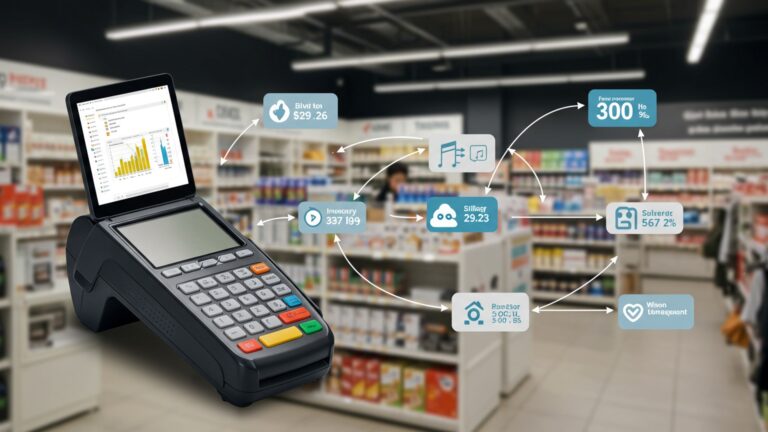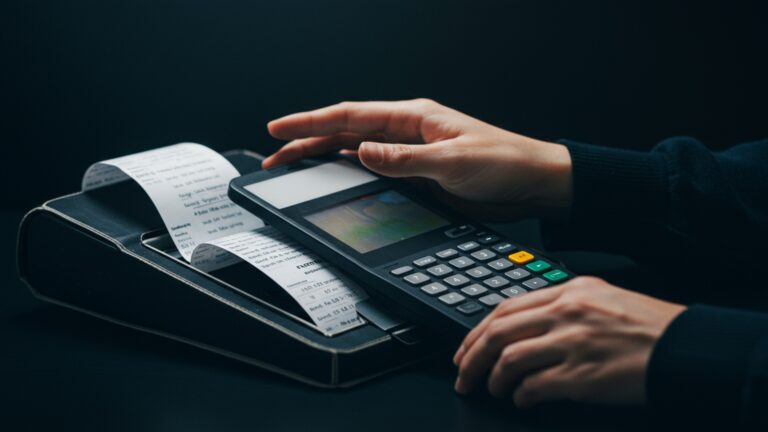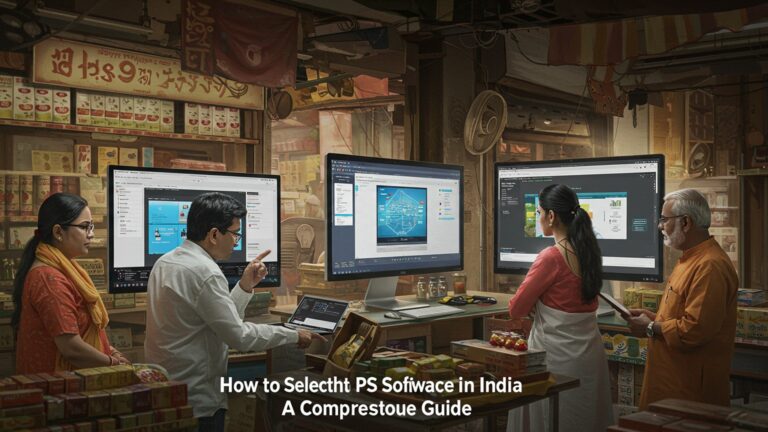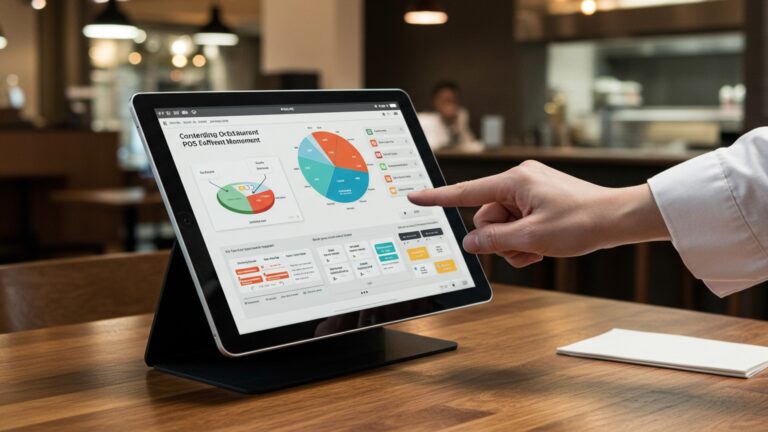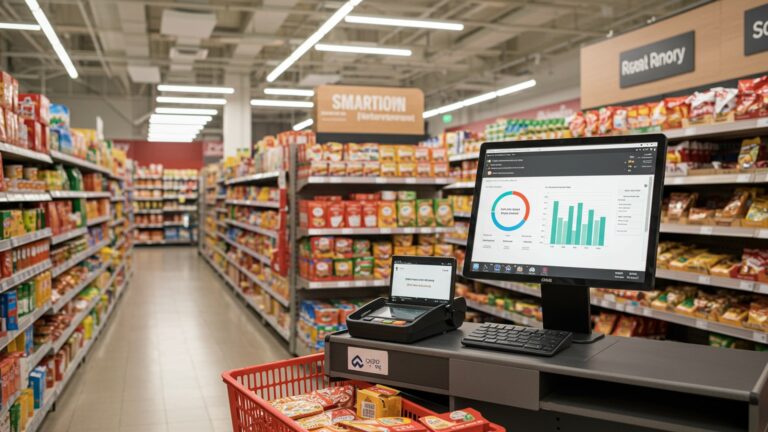A Complete Guide How to Select the Best POS Billing Software for Business
Navigating the vast landscape of modern business operations demands more than just a simple cash register; it requires a robust pos billing software solution tailored to specific needs. With the proliferation of cloud-based platforms offering everything from real-time inventory management to integrated customer loyalty programs and advanced analytics, like those seen in Square for small cafes needing mobile payment flexibility or Lightspeed Retail for multi-location fashion boutiques requiring complex inventory tracking and e-commerce sync, the selection process can feel overwhelming. The critical decision extends beyond mere feature checklists, encompassing crucial aspects like scalability for future growth, seamless integration with existing accounting systems. robust data security in an era of increasing cyber threats. Choosing the optimal system fundamentally impacts operational efficiency and customer experience.
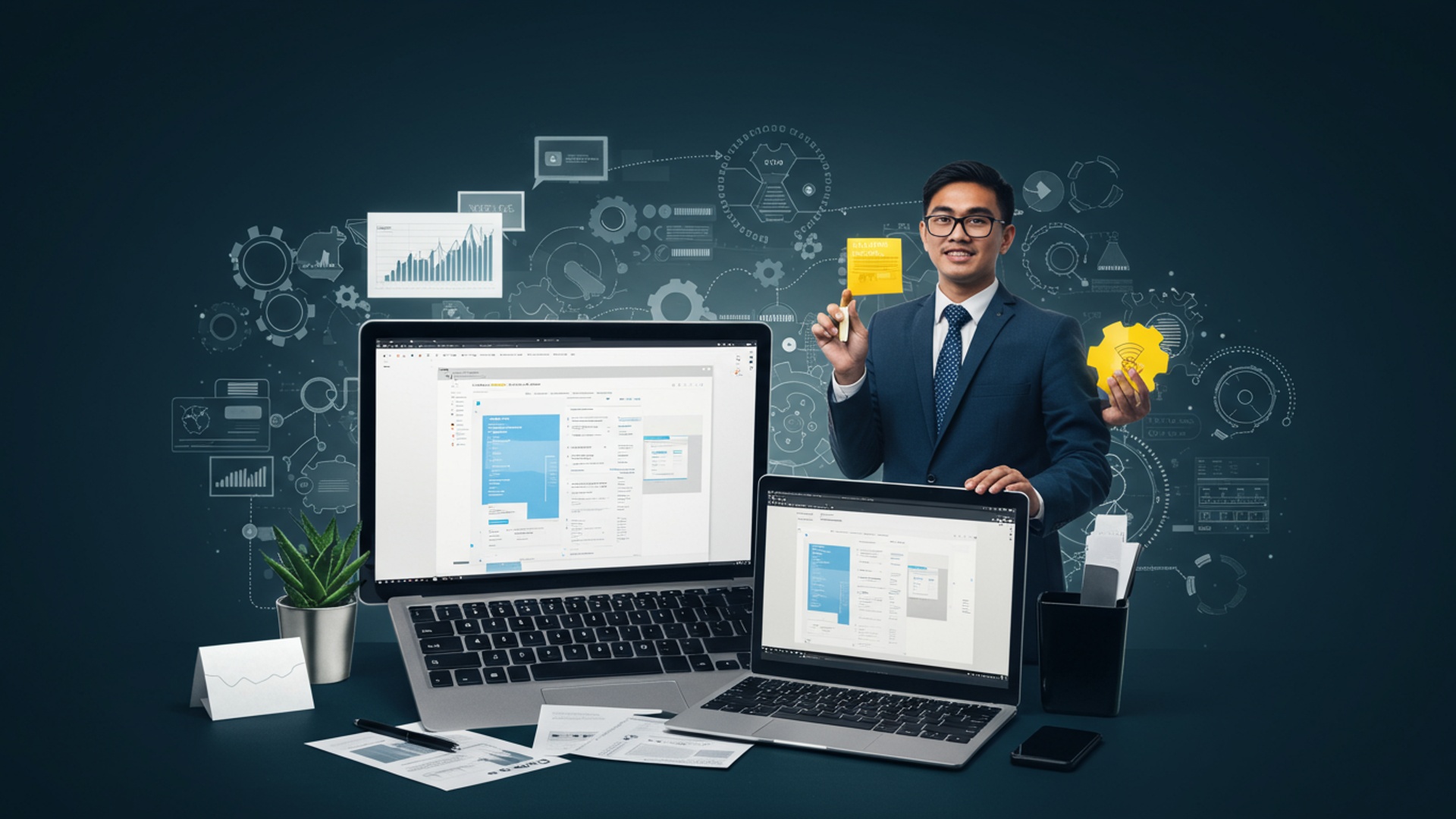
Understanding POS Billing Software: The Backbone of Modern Retail
In today’s fast-paced business environment, efficient operations are paramount. At the heart of many successful businesses, particularly in retail, hospitality. service industries, lies a robust Point of Sale (POS) system. But what exactly is POS billing software. why has it become an indispensable tool?
A POS system, at its core, is where a customer makes a payment for goods or services in exchange for a receipt. But, the software component, often referred to as POS billing software, has evolved far beyond simple transaction processing. It’s a comprehensive digital solution that manages sales, inventory, customer data. much more, acting as the central nervous system for your business operations.
What is POS Billing Software?
Simply put, POS billing software is the application that runs on your POS hardware (like a tablet, computer, or dedicated terminal) to facilitate sales transactions. It records every sale, calculates totals, processes payments. generates receipts. But, modern iterations of this software are incredibly powerful, integrating a multitude of functions that streamline virtually every aspect of a business.
Why is it Crucial for Modern Businesses?
Gone are the days of manual ledgers and standalone cash registers. Today’s competitive landscape demands speed, accuracy. insightful data. A sophisticated POS billing software offers:
- Increased Efficiency
- Better Data Insights
- Enhanced Customer Experience
- Improved Inventory Control
- Streamlined Operations
Automates sales processes, reducing human error and speeding up checkout times.
Provides real-time sales data, inventory levels. customer purchasing habits, empowering informed decision-making.
Faster service, accurate pricing. loyalty program management contribute to happier customers.
Tracks stock levels automatically, helping prevent stockouts and overstocking.
Integrates various business functions, from sales to accounting, into one cohesive system.
Key Components and Functionalities
While specific features vary, most modern POS billing software includes:
- Sales Processing
- Inventory Management
- Customer Management (CRM)
- Employee Management
- Reporting and Analytics
- Payment Processing Integration
Ringing up items, applying discounts, handling returns. managing multiple payment types.
Tracking stock levels, managing product variations, receiving new shipments. conducting stock counts.
Storing customer insights, tracking purchase history, managing loyalty programs. offering personalized promotions.
Tracking employee sales, managing shifts. setting access permissions.
Generating detailed reports on sales performance, product popularity, peak hours. more.
Seamlessly connecting with various payment gateways and hardware to accept credit cards, debit cards, mobile payments. more.
Key Features to Look for in POS Billing Software
Choosing the right POS billing software is a critical decision that can significantly impact your business’s efficiency and profitability. Beyond the basic transaction capabilities, certain features elevate a good system to a great one. Here’s what to prioritize:
Inventory Management
This is often cited as one of the most valuable features. Effective inventory management within your POS billing software allows you to:
- Track stock levels in real-time across multiple locations.
- Set up automated reorder points to prevent stockouts.
- Manage product variations (size, color, style).
- Conduct quick stock audits and generate reports on inventory turnover.
- Example: A boutique owner uses their POS to see exactly how many size M blue dresses are left, preventing them from accidentally selling an item that’s out of stock or over-ordering.
Sales Tracking & Reporting
Robust reporting capabilities are essential for making informed business decisions. Your POS billing software should offer:
- Detailed sales reports by product, category, employee. time period.
- Insights into peak sales hours, best-selling products. customer purchasing patterns.
- Customizable report generation to focus on specific KPIs.
- Export options (e. g. , CSV, PDF) for further analysis or accounting integration.
Customer Relationship Management (CRM)
Building customer loyalty is key. A good POS billing software acts as a mini-CRM by allowing you to:
- Capture customer contact details and purchase history.
- Manage loyalty programs, discounts. gift cards.
- Send targeted promotions based on past purchases.
- Enhance personalized service by recognizing returning customers.
Employee Management
Streamline staff operations and enhance accountability:
- Track individual employee sales performance.
- Manage clock-in/clock-out for payroll purposes.
- Assign different access levels and permissions to staff.
Payment Processing Integration
Seamless and secure payment processing is non-negotiable. Ensure your chosen POS billing software:
- Integrates with various payment processors (e. g. , Stripe, Square, PayPal).
- Supports multiple payment methods: credit/debit cards, contactless payments (NFC), mobile wallets (Apple Pay, Google Pay).
- Offers EMV compliance for secure chip card transactions.
- Handles split payments and refunds easily.
Multi-store Capabilities (if applicable)
For businesses with more than one location, this feature is vital. It allows for centralized management of:
- Inventory across all stores.
- Sales data and reporting for the entire business.
- Customer profiles accessible from any location.
- Employee management across different branches.
Offline Mode
Imagine your internet goes down during a busy period. An offline mode ensures your sales operations don’t grind to a halt. The POS billing software should store transactions locally and sync them once connectivity is restored.
Customization Options
Every business is unique. Look for software that allows you to:
- Customize product categories, taxes. discounts.
- Tailor receipt layouts with your branding.
- Integrate with other business tools (e. g. , accounting software like QuickBooks, e-commerce platforms like Shopify).
Types of POS Billing Software: Cloud-based vs. On-premise
When diving into the world of POS billing software, one of the primary distinctions you’ll encounter is between cloud-based and on-premise solutions. Understanding these differences is crucial for choosing the system that best aligns with your operational needs and budget.
Cloud-based POS Billing Software
Cloud-based (or SaaS – Software as a Service) POS systems store your data on remote servers managed by the software provider. You access the software via the internet, typically through a web browser or a dedicated app. This model has gained immense popularity due to its flexibility and accessibility.
Consider “The Daily Grind,” a growing coffee shop chain. They opted for a cloud-based POS billing software. This allows the owner, Maria, to monitor sales from her various locations, update menu items. access reports from her laptop at home or even on her phone while traveling. Her staff can clock in and out from any terminal. inventory updates are immediately reflected across all stores. When a new software update is released, it’s automatically deployed by the provider, requiring no effort from Maria or her team. This agility has been crucial for their expansion.
On-premise POS Billing Software
On-premise (or self-hosted) POS systems require the software to be installed directly on your business’s computers and servers. Your data is stored locally, giving you full control over it.
“Heritage Books,” an independent bookstore operating for 30 years, uses an on-premise POS billing software. The owner, Mr. Henderson, prefers this system because his internet connection can sometimes be unreliable in his historic building. he appreciates having all his data physically on-site. He has a dedicated IT person who handles updates and maintenance, ensuring his system runs exactly as he needs it, with no reliance on external servers. This setup offers him a sense of security and control over his legacy data.
Comparison: Cloud-based vs. On-premise POS Billing Software
Here’s a table to highlight the key differences between these two types of POS billing software:
| Feature | Cloud-based POS Billing Software | On-premise POS Billing Software |
|---|---|---|
| Data Storage | Remote servers (provider manages) | Local servers (business manages) |
| Accessibility | Anywhere with internet connection | Primarily on-site; remote access often requires VPN setup |
| Initial Cost | Lower (subscription model) | Higher (upfront purchase, hardware) |
| Ongoing Costs | Monthly/annual subscription fees | Maintenance, updates, IT support, server costs |
| Updates | Automatic, managed by provider | Manual, managed by business IT |
| Scalability | Highly scalable, easy to add locations/users | Can be complex and costly to scale |
| Offline Capability | Some offer offline mode for transactions, syncing later | Fully functional even without internet (unless payment processor needs it) |
| Security | Provider responsible; often robust, professional security | Business responsible; security depends on internal IT expertise |
Industry-specific POS Billing Software
Beyond the deployment model, many POS billing software solutions are tailored to specific industries, offering specialized features:
- Retail POS
- Restaurant POS
- Service POS
Often includes advanced inventory management (SKU tracking, variations), customer loyalty programs. e-commerce integrations.
Features table management, kitchen display systems (KDS), ingredient tracking, order customization. tip management.
Focuses on appointment scheduling, staff calendars, client profiles. recurring billing.
Choosing an industry-specific solution can significantly enhance efficiency by providing tools directly relevant to your operations.
Assessing Your Business Needs for POS Billing Software
Before you even start looking at specific vendors, a thorough assessment of your business needs is paramount. This foundational step ensures that the POS billing software you select is a perfect fit, not just a temporary fix. Think of it as mapping out the ideal operating system for your unique business ecosystem.
Industry Type and Size
The first and most critical consideration is your industry and the scale of your operations. A small independent coffee shop will have vastly different needs than a multi-location retail chain or a fine-dining restaurant.
- Retail
- Restaurant/Cafe
- Service (Salon, Spa, Clinic)
Do you need robust inventory management for thousands of SKUs, barcode scanning. integration with an e-commerce platform?
Are table management, kitchen display screens, ingredient tracking. reservation systems a priority?
Is appointment scheduling, client history, staff management. recurring billing more crucial?
List out your core daily operations and identify which specific features would directly enhance or automate them. For instance, a salon owner would prioritize appointment booking over extensive inventory tracking for clothing sizes.
Budget Considerations
Your budget will significantly influence your choices. POS billing software comes with various pricing models:
- Subscription-based (SaaS)
- One-time Purchase
- Transaction Fees
Monthly or annual fees per terminal or user. Often lower upfront costs.
Higher initial cost for the software license, potentially lower long-term costs (but consider maintenance).
Some providers bundle payment processing with their software, charging a percentage per transaction.
Don’t forget to factor in hardware costs (terminals, receipt printers, barcode scanners, cash drawers) and potential integration fees or training costs. A common mistake is only budgeting for the software subscription and forgetting the essential hardware and setup expenses.
Scalability Requirements
Where do you see your business in 1, 3, or 5 years? Your POS billing software should be able to grow with you.
- Adding Locations
- Increased Volume
- New Features
Can the software easily support new stores, sharing inventory and customer data across all branches?
Can it handle a higher volume of transactions without slowing down?
Can you easily add new functionalities (e. g. , online ordering, advanced loyalty programs) as your business evolves?
“When I first opened my small bakery, I picked the cheapest POS system I could find. It worked for a year. when I decided to open a second location and introduce online ordering, the system simply couldn’t cope. I ended up spending more time and money migrating to a scalable POS billing software than if I had invested wisely from the start.” – Sarah, Owner of ‘The Sweet Spot’ Bakery.
Hardware Compatibility
Will the new POS billing software work with your existing hardware (if any), or will you need to invest in new equipment? Check compatibility with:
- Operating systems (Windows, macOS, iOS, Android).
- Receipt printers (thermal, impact).
- Barcode scanners.
- Cash drawers.
- Payment terminals.
Some providers offer bundled hardware, which can simplify setup but might limit your choices. Always verify the specifications.
// Example of checking hardware compatibility for a specific POS system
// This is a conceptual representation, actual checks vary by vendor
// Always refer to the vendor's official compatibility list. function checkPOSHardwareCompatibility(posSoftwareName) { const compatiblePrinters = getCompatiblePrinters(posSoftwareName); const compatibleScanners = getCompatibleScanners(posSoftwareName); const compatibleOS = getCompatibleOperatingSystems(posSoftwareName); console. log(`--- Hardware Compatibility for ${posSoftwareName} ---`); console. log(`Compatible Printers: ${compatiblePrinters. join(', ')}`); console. log(`Compatible Barcode Scanners: ${compatibleScanners. join(', ')}`); console. log(`Compatible Operating Systems: ${compatibleOS. join(', ')}`); if (compatiblePrinters. length === 0 || compatibleScanners. length === 0 || compatibleOS. length === 0) { console. warn("WARNING: Some hardware components might not be fully supported. Check vendor documentation.") ; }
} // Dummy functions for demonstration
function getCompatiblePrinters(software) { if (software === "XYZ_POS") return ["Epson TM-T88V", "Star Micronics TSP100"]; return ["Generic Thermal Printer"];
} function getCompatibleScanners(software) { if (software === "XYZ_POS") return ["Honeywell Voyager 1470g", "Zebra DS2208"]; return ["Basic USB Scanner"];
} function getCompatibleOperatingSystems(software) { if (software === "XYZ_POS") return ["Windows 10+", "iOS 12+"]; return ["Windows 7+"];
} // Call the function for a hypothetical POS system
checkPOSHardwareCompatibility("XYZ_POS");
Existing Systems Integration
Does your business already use other software that needs to “talk” to your POS? This could include:
- Accounting Software
- E-commerce Platforms
- CRM Systems
- Employee Scheduling Software.
QuickBooks, Xero, Sage.
Shopify, WooCommerce, Magento.
Salesforce, HubSpot.
Seamless integration avoids manual data entry, reduces errors. saves valuable time. Look for POS billing software that offers native integrations or provides a robust API (Application Programming Interface) for custom connections.
Evaluating POS Billing Software Providers
Once you have a clear understanding of your business’s specific needs, the next crucial step is to evaluate the actual providers of POS billing software. This goes beyond just features and delves into the reliability, support. long-term partnership potential of the company behind the software.
Reputation and Reviews
A provider’s reputation speaks volumes. Before committing, do your due diligence:
- Read Online Reviews
- Industry-Specific Forums
- Case Studies and Testimonials
- Ask for References
Consult independent review sites like G2, Capterra, Software Advice. Trustpilot. Pay attention to common complaints and praises. Look for patterns in feedback regarding customer support, ease of use. reliability.
Check forums or communities related to your industry. Other business owners might share their experiences with specific POS billing software solutions.
While provider-published testimonials are often positive, they can offer insights into the types of businesses they serve and the problems they solve.
Don’t hesitate to ask the provider for references from businesses similar to yours. A reputable company will be happy to provide them.
Customer Support
Even the most intuitive POS billing software can present challenges. Excellent customer support is invaluable, especially during critical moments like peak business hours or system glitches.
- Availability
- Channels
- Response Time
- Quality of Support
Do they offer 24/7 support, or only during business hours? What time zones do they cover?
How can you reach them? Phone, email, live chat, knowledge base?
What are their typical response and resolution times?
Are support agents knowledgeable and helpful, or do they just read from a script? A trial run of their support (e. g. , asking a pre-sales question) can be illuminating.
Prioritize providers with multiple support channels and a strong reputation for responsive, knowledgeable assistance. Imagine a Saturday night rush when your printer stops working – you’ll want immediate help.
Training and Implementation
Migrating to a new POS billing software can be daunting. The provider’s support during this phase is critical:
- Onboarding Process
- Training Resources
- Documentation
- Implementation Team
Do they offer structured onboarding, including data migration assistance?
Are there comprehensive tutorials, videos, webinars, or in-person training options for you and your staff?
Is there clear, accessible documentation or a knowledge base for self-help?
Will you have a dedicated account manager or implementation specialist to guide you through the setup?
Security Features
Your POS billing software handles sensitive customer payment details and your business’s financial data. Security is non-negotiable.
- PCI DSS Compliance
- Data Encryption
- User Access Controls
- Backup and Recovery
- Fraud Prevention
Ensure the software and its payment processing integrations are compliant with Payment Card Industry Data Security Standard (PCI DSS).
How is data encrypted both in transit and at rest?
Can you set granular permissions for different employee roles?
For cloud-based systems, inquire about their data backup frequency and disaster recovery protocols. For on-premise, comprehend your responsibilities.
Does the system offer any built-in features to detect or prevent fraudulent transactions?
Pricing Models
Beyond the sticker price, interpret the full cost of ownership. Different pricing models can significantly impact your long-term budget:
- Subscription Fees
- Transaction Fees
- Hidden Costs
- Contract Length
Monthly or annual. Are they per terminal, per user, or based on transaction volume?
If payment processing is bundled, comprehend the percentage and any flat fees per transaction. Compare these with external payment processors.
Look out for fees for additional features, integrations, premium support, or hardware rentals.
Are you locked into a long-term contract, or can you opt for month-to-month?
Always request a detailed quote that outlines all potential costs to avoid surprises down the line.
The Implementation Process and Best Practices
Selecting the best POS billing software is only half the battle; successful implementation is where your investment truly pays off. A well-planned rollout minimizes disruption and maximizes the benefits of your new system.
1. Data Migration
This is often the most critical and time-consuming step. It involves transferring your existing product inventory, customer details. sales history into the new POS billing software.
- Inventory
- Customers
- Sales History
Export your current product list, including SKUs, descriptions, prices. stock levels. Clean up any outdated or incorrect data before importing.
Transfer customer names, contact details. loyalty program points.
While not always mandatory, migrating past sales data can be useful for historical reporting and trend analysis.
Work closely with your chosen POS billing software provider’s implementation team. Many offer tools or services to assist with data migration. Always back up your existing data before starting the migration process.
2. Staff Training
Your staff will be the primary users of the new POS billing software. Comprehensive training is essential for smooth adoption and preventing errors.
- Hands-on Sessions
- Role-specific Training
- Training Materials
Conduct practical training sessions with your team. Let them practice ringing up sales, processing returns. performing daily tasks in a test environment.
Tailor training to different roles (e. g. , cashiers, managers, inventory staff) as their needs and access levels will vary.
Create simple, step-by-step guides or cheat sheets for quick reference. Utilize any video tutorials or knowledge bases provided by the software vendor.
Designate a “super-user” or internal expert who becomes proficient with the new system. This person can act as a first point of contact for staff questions and provide ongoing support.
3. Testing
Before going live, thoroughly test every function of the new POS billing software in a real-world scenario.
- Mock Transactions
- Hardware Testing
- Reporting
- Integration Checks
Process various types of sales, including discounts, returns, gift cards. different payment methods.
Ensure all connected hardware (printers, scanners, payment terminals) is working correctly with the software.
Run various reports to ensure data is being captured and displayed accurately.
Verify that integrations with accounting software, e-commerce platforms, or other systems are functioning as expected.
4. Phased Rollout (if applicable)
For larger businesses or those with multiple locations, a phased rollout can reduce risk.
- Start with one location or a small group of staff to identify and resolve any issues before a wider deployment.
- Gather feedback from the initial users and make necessary adjustments.
5. Regular Updates and Maintenance
POS billing software, especially cloud-based solutions, receives regular updates to introduce new features, improve security. fix bugs.
- Stay Updated
- Regular Backups
- Review Performance
For cloud-based systems, updates are often automatic. For on-premise, ensure your IT team applies updates promptly.
Ensure your data is regularly backed up. For cloud systems, the provider handles this. it’s good to grasp their policy. For on-premise, establish a robust backup schedule.
Periodically review the system’s performance and ensure it continues to meet your evolving business needs.
By diligently following these steps, your transition to a new POS billing software can be a smooth and rewarding experience, setting your business up for greater efficiency and growth.
Real-World Scenarios and Case Studies
Understanding the features and types of POS billing software is one thing. seeing how it transforms real businesses offers invaluable insights. Here are a few scenarios illustrating the impact of well-chosen solutions.
Case Study 1: The Small Retail Shop’s Inventory Transformation
“Urban Threads,” a small fashion boutique with one owner and two part-time staff, previously relied on manual spreadsheets for inventory and a basic cash register for sales. Stockouts were common. identifying best-sellers was a tedious process.
Inefficient inventory management led to lost sales and wasted time on manual stock counts. No data on customer preferences.
Urban Threads implemented a cloud-based POS billing software with strong inventory management features.
- Real-time Inventory
- Automated Reorder Points
- Sales Analytics
- Basic CRM
Every sale automatically deducts from stock. The owner can see current levels for all items from her phone.
The system sends alerts when popular items hit a low stock threshold, prompting timely reorders.
Reports easily identify top-performing products and those that aren’t selling, guiding purchasing decisions.
The software captures customer emails at checkout, allowing the owner to send targeted promotions based on past purchases.
Within six months, Urban Threads reduced stockouts by 40% and improved inventory turnover by 25%. Customer engagement increased through personalized email campaigns, leading to a 15% rise in repeat business. The owner now dedicates more time to merchandising and less to administrative tasks.
Case Study 2: A Restaurant Streamlining Service and Kitchen Operations
“The Gilded Spoon,” a bustling mid-range restaurant with a large dining area and a busy kitchen.
Manual order taking led to errors between front-of-house and kitchen staff, resulting in slow service and customer dissatisfaction. Splitting checks and managing table turns was also cumbersome.
They adopted an industry-specific restaurant POS billing software featuring table management and a Kitchen Display System (KDS).
- Tablet-based Ordering
- KDS Integration
- Table Management
- Split Bills
Servers take orders directly on tablets, which are instantly sent to the KDS in the kitchen. This eliminated handwriting errors and sped up order delivery.
The kitchen staff sees orders on a screen, organized by table and course, improving preparation flow and reducing confusion.
The POS tracks table status (seated, ordered, eating, paid, dirty), allowing hosts to manage reservations and seating more efficiently.
The software easily allows customers to split bills by item or by percentage, a common request.
Order accuracy improved by 95%. average table turnover time decreased by 10 minutes, allowing them to serve more customers. Customer reviews frequently praised the faster service and fewer order mistakes, boosting their reputation and revenue.
Case Study 3: A Service-Based Business Enhancing Client Engagement
“Zenith Wellness,” a growing yoga studio offering classes, workshops. private sessions.
Managing class schedules, instructor availability, client bookings. membership payments manually was becoming overwhelming, leading to scheduling conflicts and missed payment tracking.
Zenith Wellness implemented a specialized service-industry POS billing software with robust scheduling and client management features.
- Online Booking Portal
- Automated Reminders
- Membership Management
- Client Profiles
Clients can view class schedules, book sessions. pay online 24/7, reducing administrative calls.
The system sends automated email/SMS reminders for upcoming classes, reducing no-shows.
Automatically processes recurring membership payments and tracks attendance.
Stores client history, including attendance, preferred instructors. payment status, allowing for personalized service.
Staff saved an average of 10 hours per week on administrative tasks, which they redirected to teaching and client engagement. No-show rates dropped by 15%. membership renewals increased by 20% due to streamlined billing and improved communication. The studio saw significant growth in its client base and satisfaction.
These examples highlight that the “best” POS billing software isn’t a one-size-fits-all solution. It’s the one that directly addresses your unique operational challenges and helps you achieve your business goals, proving that a well-chosen system is a true asset.
Future Trends in POS Billing Software
The landscape of POS billing software is constantly evolving, driven by advancements in technology and changing consumer expectations. Businesses looking to stay competitive need to be aware of these emerging trends to make future-proof decisions when selecting their systems.
1. AI and Machine Learning Integration
Artificial Intelligence (AI) and Machine Learning (ML) are set to revolutionize POS billing software by moving beyond basic reporting to predictive analytics and hyper-personalization.
- Predictive Inventory
- Personalized Marketing
- Fraud Detection
AI can examine sales history, seasonal trends. even external factors (like weather forecasts) to predict demand with greater accuracy, optimizing inventory levels and reducing waste. For example, a bakery’s POS might suggest ordering more ingredients for a specific pastry on a predicted cold, rainy day.
ML algorithms can review individual customer purchase history and preferences to suggest highly relevant products or promotions at the point of sale, increasing upsell and cross-sell opportunities.
AI can identify unusual transaction patterns in real-time, flagging potentially fraudulent activities before they complete.
2. Mobile POS (mPOS) Dominance
The shift towards mobile devices is accelerating. mPOS solutions, which allow businesses to conduct transactions anywhere using smartphones or tablets, offer unparalleled flexibility.
- Increased Mobility
- Pop-up Shops & Events
- Enhanced Customer Service
Retail staff can assist customers and complete purchases directly on the sales floor, reducing checkout lines. Restaurants can take orders tableside.
Ideal for temporary setups like farmers’ markets, craft fairs, or food trucks, enabling full POS functionality without extensive hardware.
Empowering staff with real-time inventory and customer data directly on their mobile device to provide better service.
Many modern POS billing software solutions are designed with mobile-first or mobile-compatible interfaces.
3. Enhanced Analytics and Business Intelligence
While current POS systems offer reporting, the future holds deeper, more intuitive business intelligence tools.
- Visual Dashboards
- Cross-channel Data Unification
- Actionable Insights
More dynamic and customizable dashboards will allow business owners to visualize key performance indicators (KPIs) at a glance, without needing to run complex reports.
Integrating data from online sales, social media, loyalty programs. in-store purchases to provide a holistic view of customer behavior and business performance. This allows for a truly omnichannel strategy.
The analytics will not just present data. also suggest actionable steps based on the insights, e. g. , “Product X sales are down 15% this week; consider a flash sale.”
4. Integrated E-commerce and Omnichannel Experiences
The line between brick-and-mortar and online retail is blurring. Future POS billing software will offer even more seamless integration with e-commerce platforms.
- Unified Inventory
- Click-and-Collect / Buy Online, Pick Up In-Store (BOPIS)
- Centralized Customer Profiles
Real-time synchronization of inventory across physical stores and online channels, preventing overselling or stock discrepancies.
Seamlessly manage orders placed online for in-store pickup.
A single customer profile that captures interactions and purchases whether they happen online or in-store, facilitating consistent loyalty programs and personalized experiences.
This trend emphasizes creating a consistent brand experience for customers, regardless of their chosen shopping channel.
5. Voice Commerce and Gesture Control
Looking further ahead, voice commands and gesture control could become alternative interaction methods for POS billing software, particularly in environments where touchscreens are impractical or for accessibility reasons.
- Imagine a chef in a busy kitchen updating an order on the KDS using voice commands without touching a screen.
- Or a cashier quickly adding items with a simple gesture, enhancing speed and hygiene.
While still in nascent stages for POS, these technologies are advancing rapidly and could become part of the checkout experience.
Staying informed about these trends will enable businesses to choose a POS billing software that is not only effective today but also adaptable and scalable for the innovations of tomorrow.
Conclusion
Ultimately, selecting your POS billing software isn’t merely a technical decision; it’s a strategic investment in your business’s future. Instead of just comparing feature lists, I strongly advise conducting a real-world trial. See if it truly integrates with your existing workflow and how intuitively your team adapts to it. For instance, with the surge in QR code payments and unified commerce platforms, ensure your chosen system can seamlessly handle diverse payment gateways and omnichannel sales, as highlighted in our detailed guide on choosing billing and POS software. I’ve personally witnessed businesses, from bustling cafes to boutique apparel stores, unlock significant growth simply by optimizing their billing process. It’s not just about speed; it’s about gaining data-driven insights and reducing operational friction. Embrace this decision as an opportunity to streamline, innovate. ultimately, propel your business towards unprecedented efficiency and success.
More Articles
Learn How to Select the Right POS Software for Your Business Success
Master Retail Operations How to Implement POS Software for Success
Discover 7 Simple Ways to Prevent Billing Errors and Save Your Business Money
7 Essential Inventory Management POS Strategies for Indian Businesses
Learn 7 Essential GST Invoicing Tips for Small Business Success
FAQs
What exactly is POS billing software. why do I even need it for my business?
POS (Point of Sale) billing software is a digital cash register combined with powerful management tools. It handles transactions, processes payments, tracks sales, manages inventory. often helps with customer data. You need it because it streamlines operations, reduces errors, gives you real-time insights into your sales. ultimately saves you time and money compared to manual methods.
How do I figure out which features are actually vital for my specific business?
Start by listing your current business processes and pain points. Are you struggling with inventory? Do you need detailed sales reports? Do you run a restaurant or a retail store? The features you need will vary greatly. For example, a restaurant needs table management, while a retail shop needs robust inventory tracking. Prioritize what will solve your biggest problems and support your growth goals.
Should I go for cloud-based or on-premise POS software?
This is a big one! Cloud-based software (SaaS) means the software is hosted online; you access it via the internet. It’s usually more flexible, accessible from anywhere. has lower upfront costs. On-premise means it’s installed directly on your computers. It gives you more control over data and customization but requires you to manage hardware and updates. Consider your budget, internet reliability. need for remote access.
What kind of budget should I set aside for POS software?
Your budget needs to account for more than just the software license. Consider setup fees, hardware costs (like barcode scanners, receipt printers, cash drawers), subscription fees (for cloud-based solutions), training. ongoing support. Prices vary widely based on features and vendor, so get detailed quotes and look for transparent pricing.
How easy is this software going to be for my staff to learn and use?
Ease of use is crucial for staff adoption. Look for an intuitive, user-friendly interface that requires minimal training. A complex system can slow down transactions and frustrate employees. Ask for demos or free trials to let your staff test it out before committing. A good system should enhance, not hinder, their daily tasks.
Can a POS system really grow as my business gets bigger, or will I have to switch later?
Scalability is super vital. Look for software that can handle increased transaction volumes, add more users, support multiple store locations if you plan to expand. integrate with other tools you might use (like accounting software or e-commerce platforms). A good POS should be a long-term partner, not a temporary fix.
What about ongoing support and security once I’ve picked a system?
Excellent customer support is non-negotiable. Check what kind of support they offer (phone, email, chat), their hours. response times. For security, ensure the software has robust data encryption, regular backups. compliance with payment processing standards (like PCI DSS) to protect your business and customer details.

